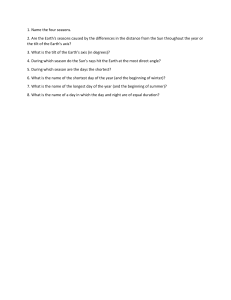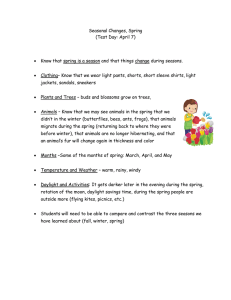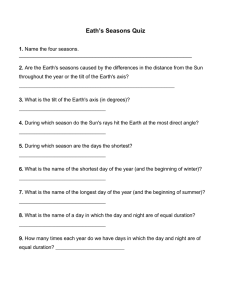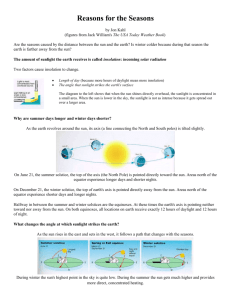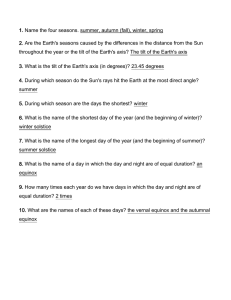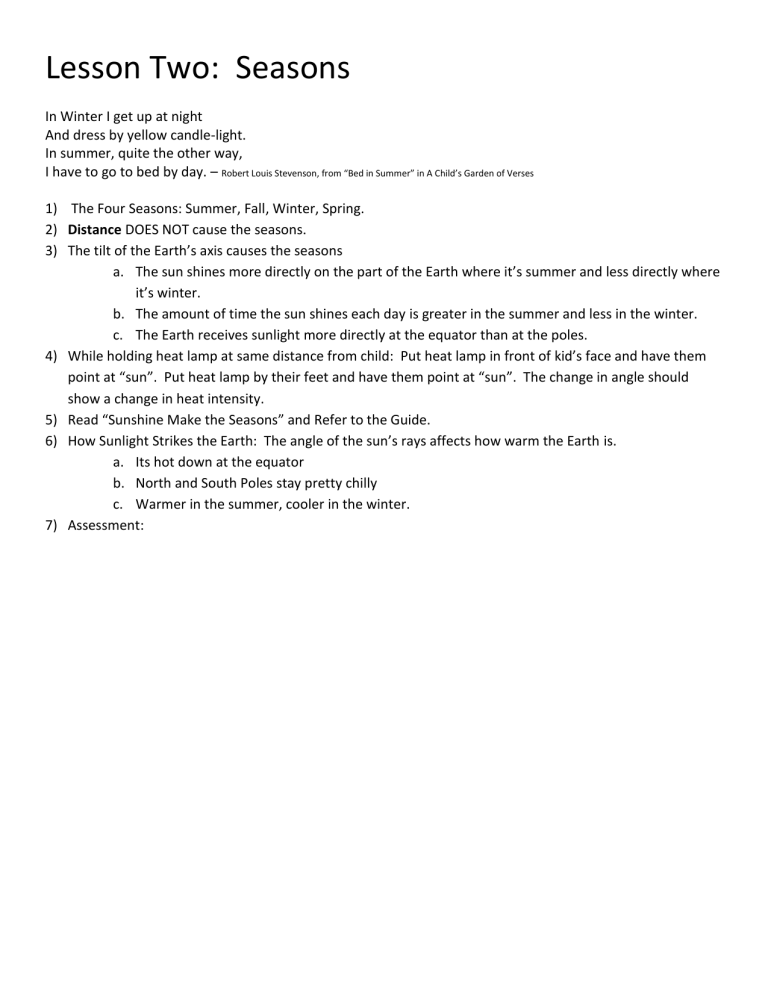
Lesson Two: Seasons In Winter I get up at night And dress by yellow candle-light. In summer, quite the other way, I have to go to bed by day. – Robert Louis Stevenson, from “Bed in Summer” in A Child’s Garden of Verses 1) The Four Seasons: Summer, Fall, Winter, Spring. 2) Distance DOES NOT cause the seasons. 3) The tilt of the Earth’s axis causes the seasons a. The sun shines more directly on the part of the Earth where it’s summer and less directly where it’s winter. b. The amount of time the sun shines each day is greater in the summer and less in the winter. c. The Earth receives sunlight more directly at the equator than at the poles. 4) While holding heat lamp at same distance from child: Put heat lamp in front of kid’s face and have them point at “sun”. Put heat lamp by their feet and have them point at “sun”. The change in angle should show a change in heat intensity. 5) Read “Sunshine Make the Seasons” and Refer to the Guide. 6) How Sunlight Strikes the Earth: The angle of the sun’s rays affects how warm the Earth is. a. Its hot down at the equator b. North and South Poles stay pretty chilly c. Warmer in the summer, cooler in the winter. 7) Assessment: Seasons Assessment 1) The seasons are caused by __________________________________________________________. 2) The amount of daylight during the summer in New York City is - _____________________________ the amount of daylight in New York City in the winter. a. less than b. greater than c. the same as 3) What is one way the tilt of the Earth’s axis causes the seasons? a. The tilt of the axis brings the Earth closer to the sun in the summer. b. The tilt causes the amount of time the sun shines each day to be greater on the part of the Earth where it is winter and less where it is summer. c. The tilt causes the Earth’s rotation to slow down in the summer and speed up in the winter. d. The tilt causes the sun to shine more directly on the part of the Earth where it is summer and less directly where it is winter. 4) Which of the following is a true statement about the equator and the North and South Poles? a. The equator never receives direct sunlight, only the poles do. b. The sun shines more directly at the equator than at the poles. c. When one of the poles receives sunlight all day, the equator is dark all day. d. The sun shines directly overhead at the poles when it is overhead at the equator.
